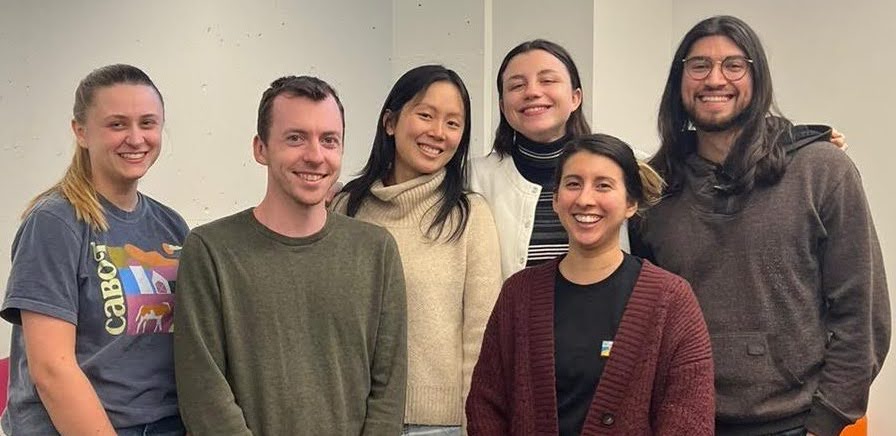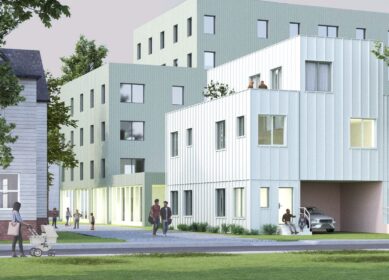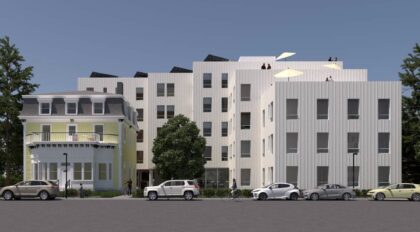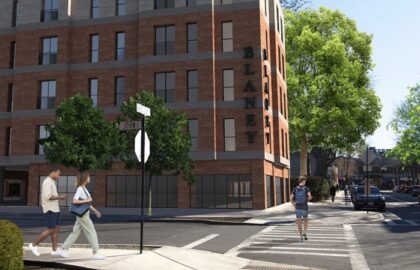Clark graduate students recognized for affordable housing proposals

Three Clark graduate students have been recognized in a Federal Home Loan Bank of Boston competition that challenged teams of students from Massachusetts universities to create affordable housing development proposals. The goal is to build interest in community development and encourage the next generation of affordable housing practitioners.
Seven teams of graduate students from institutions including Clark, Harvard, the Boston Architectural College, and MIT submitted proposals. Three of the four winning teams included a student from Clark’s Community Development and Planning program. Prizes for the top three teams were $10,000, $7,000, and $4,000, respectively.

“A lot of people think an affordable housing structure will be a big, ugly eyesore. It doesn’t have to be that way,” says Wynne Plagge ’22, M.A. ’23, who was on the winning team. “Everyone deserves to live somewhere beautiful and spacious.”
The competition connects graduate students with developers and experts in the fields of community development finance, architectural design, and community engagement to create affordable housing proposals.
“It’s exactly the kind of culminating experience we want students to have because it puts together so many of the elements of the program,” says Professor Laurie Ross, director of the Department of International Development, Community, and Environment.
The students participated in the competition with support and guidance from IDCE Professor Lionel Romain, the Community Economic Development Assistance Corporation’s Director of Housing for Central and Western Massachusetts.
“As a practitioner who works with CDCs (community development corporations), I see the results of this kind of work,” says Romain. “I can only imagine that as a student it must be exciting to do the work and see the fruits of your labor.”
Plagge’s team proposed Aucella Court Homes, which would transform an underutilized municipal parking lot in Revere into a family-centered complex with townhouses, affordable apartments, a greenspace courtyard, and ground-floor commercial space including a childcare facility. The team collaborated with The Neighborhood Developers, Davis Square Architects, and a finance mentor from TCAM Asset Management.
“Our group was very ambitious with what we wanted to accomplish,” says Plagge. “The team architects were the shining stars because they had to do so much work with the oddly shaped lot.”
Zoe Chatfield, M.A. ’23, and her team placed third. Gabel Cramer ’22, M.A. ’23, and his group received an honorable mention.

Walnut Park Place, crafted by Chatfield and her team, proposed developing seven market-rate units and 22 new one- to three-bedroom affordable condominiums in the Egleston Square section of Roxbury. The condominiums would be affordable for those earning between 80 and 100 percent of the local median income. The group collaborated with the Roxbury-based CDC Urban Edge, ICON Architecture, and Eastern Bank.
“Working with students from other graduate programs was really nice because the focuses of our studies represented all the different elements that go into making an affordable housing project happen,” says Chatfield. “Clark has housing and policy classes, but no architecture program, so it was cool to be on a team with people studying architecture. It allowed us to marry the policy, community engagement, and finance pieces with actual design work, applying that in a real-world scenario.”
Chatfield and her team wanted to concentrate their efforts on affordable homeownership opportunities because the area already features affordable rental units.
“At the same time, I was researching my final paper and thinking about ways that we can incorporate wealth-building and stability into housing that doesn’t rely solely on single-family homes,” she says. “This kind of plan goes beyond addressing the immediate need of providing shelter. It impacts a long-term need of creating more stable communities to break cycles of poverty.”

Cramer and his group partnered with the Brookline Improvement Coalition CDC, Elkus Manfredi Architects, and Mass Housing to propose The Blaney at Babcock, a 66-unit affordable housing project featuring a ground-level community space, ground-level green space, and a rooftop garden. The plan would transform an underused parking lot adjacent to a bustling commercial corridor into a six-story building, featuring studios, one-, two-, and three-bedroom units.
“We wanted to create an environmentally sustainable, family-friendly building with indoor and outdoor community spaces,” says Cramer. “This is a good school district, and we were trying to play into some of the strengths of the area.”
Ross says Plagge, Chatfield, and Cramer brought a holistic approach to their teams, merging the design and finance aspects of affordable housing with community engagement and community impact.
“Housing is one of the most fundamental aspects for neighborhood stability,” says Ross. “When people don’t have a home, they can’t do much else.”


